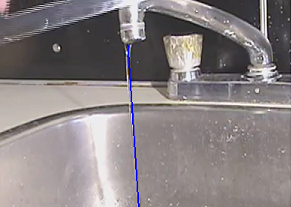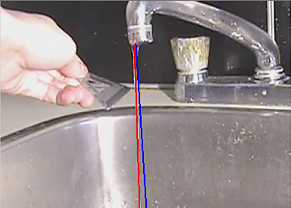In this demonstration, a simple charged object can affect the path of water!
Watch Video:
Teachable Topics:
- molecular properties of water
- polar molecules
- law of charges
Theory:
Static electricity is a common occurrence that all of us have encountered on a dry day in the form of a shock. This same concept can be used to bend a stream of water with a nylon comb or, as in our demo, a plastic protractor. To begin, the protractor is rubbed with felt which deposits extra electrons onto the protractor (this can also be done by rubbing the comb or protractor through your hair; however we found the felt worked best). The extra electrons create a net negative charge on the protractor where it was rubbed. Water is a polar molecule, meaning one end of it is slightly positively charged (the H2 end) and the other is slightly negative (the O end). When the negatively charged protractor is brought towards the stream of water, the positive ends of the molecules are attracted to it and the stream bends towards the protractor.
 Figure 1: Natural path of water shown in blue.
|
 Figure 2: New path (red).
|
Apparatus:
- sink with running water
- comb; plastic ruler; protractor
- felt
Procedure:
- Turn on the faucet so that a consistent narrow stream of water is flowing
- Take the comb or protractor and rub it with felt for approximately 10 seconds.
- Bring the protractor next to the stream of water without letting it touch the stream and watch the stream bend!



